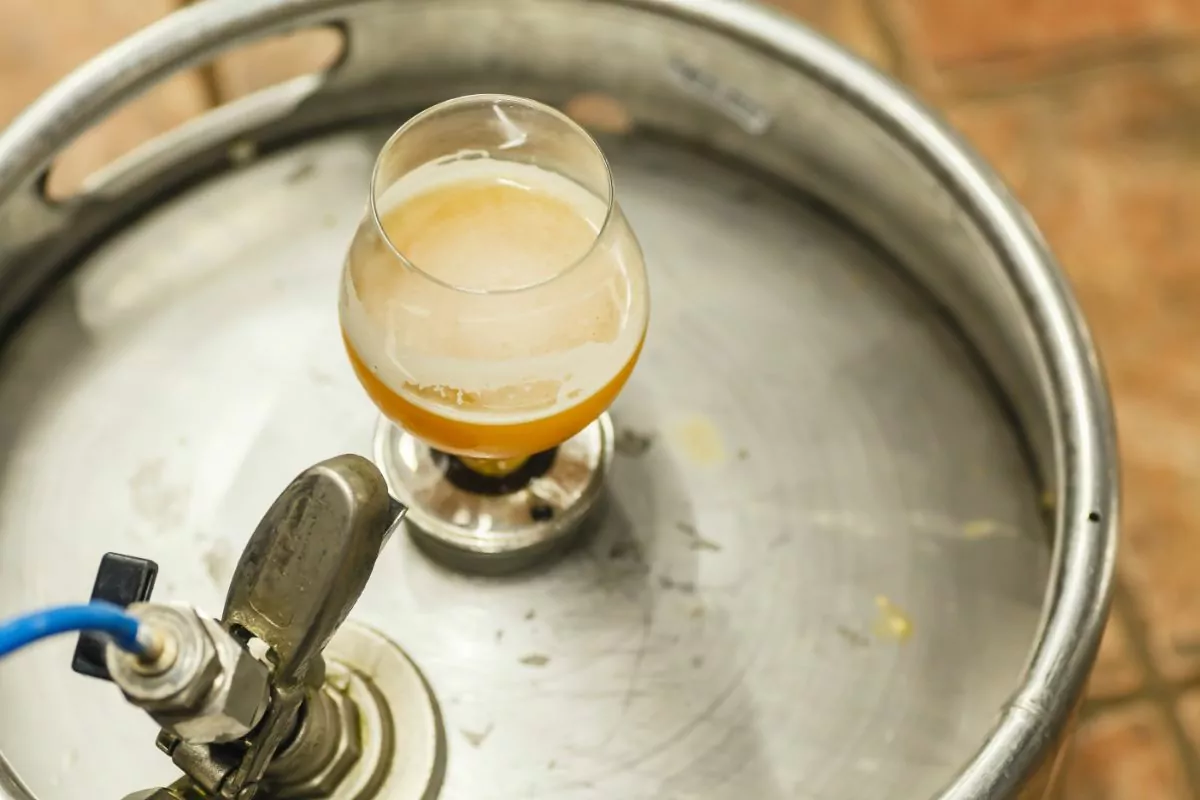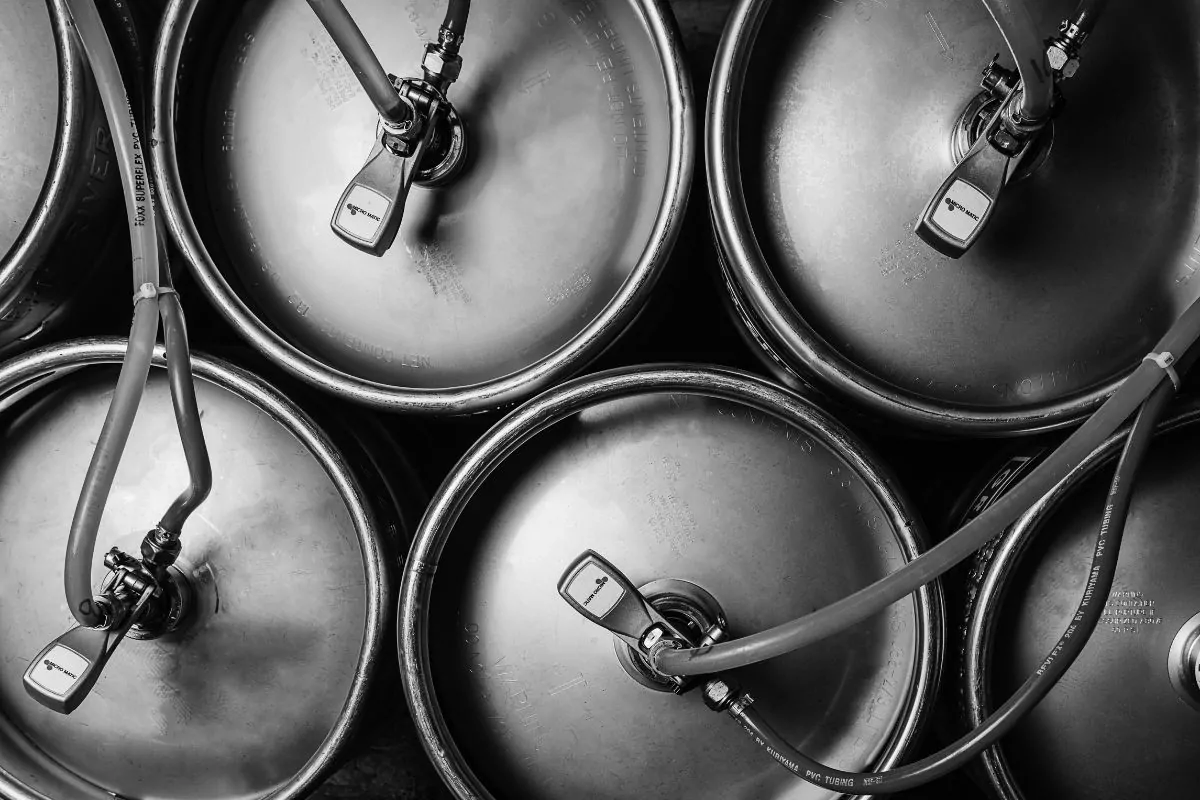A staple in the beer industry, kegs are vital to the production and transportation of beer worldwide. In the backroom of your local bar, there will be a keg hiding out of sight, providing you with your beer of choice every time you visit.
You’ve probably seen kegs in parties, too, where you can go and help yourself and face the consequences the next day.

Have you ever actually wondered what a keg is and how it works, though? With over 60 million gallons of precious beer sold in kegs (see also: How Many Gallons In A Keg?)each year, there’s no doubt that they are vital to the beer industry.
Find out what a keg is and how they work with us today! We have compiled this guide on everything you need to know about kegs, so you can enjoy your next beer with an extra dose of wisdom thrown in.
What Is A Keg?
Typically made of metal, a beer keg is a round barrel used for storing and dispensing beer. It is designed to maintain the freshness and carbonation of the beer within, while simultaneously allowing it to be easily transported and served.
Beer kegs come in various sizes, and are commonly used in the beer industry to package and distribute beer from breweries to bars, restaurants, and other venues. They can also be used by home brewers for personal use or at parties for folks to help themselves to.
Types Of Kegs
Altogether, you can use three styles of kegs:
- Pin lock kegs
- Ball lock kegs
- Sankey kegs
Pin and ball lock kegs are very similar to one another, but they do have some differences. A ball lock keg is the most common of the three and is the type used by most home brewers.
A ball lock is used to connect the gas and liquid lines, hence the name. This type of keg comes in various sizes, with the most common being the 5-gallon ball lock keg, which is also known as a “corny” keg.
This size of keg is generally small enough to fit inside a standard refrigerator but, ball lock kegs are also available in larger sizes, such as 10-gallon and 15-gallon kegs. These are used more commonly in commercial settings.
A pin lock keg uses a system of pins and disconnects to attach the beer lines to the keg. The pins on a pin lock keg are typically spaced closer together than on a ball lock keg.
Like ball lock legs, this type of keg is often used by home brewers and is less common in commercial settings. Pin lock kegs are typically wider and shorter than ball lock kegs, and can hold between 2.5 and 5 gallons of beer.
They tend to be less expensive, too, making them a popular choice for home brewers who are just starting out.
Sankey kegs are the ones used most often in commercial breweries, but can also be used by home brewers. They are widely used in the brewing industry for packaging and transporting beer and are made of stainless steel.
They have a standardized shape and size, allowing them to be easily filled and transported by beer distributors. Not only that, but they have a single large opening on top for filling and cleaning, and use a spear system to dispense beer.
The spear is a long metal tube that runs down the center of the keg and is used to extract the beer. All in all, sankey kegs come in a variety of sizes, with the most common being 1/2 barrel (15.5 gallons) and 1/6 barrel (5.16 gallons).

How A Keg Works
Modern kegs are far more than just vessels to hold beer in. These days, they are designed as part of the dispensing system, too.
No matter what size a keg is, it will be built with a valve mechanism that allows compressed gas to enter and push the contents out of the keg.
This valve also seals the contents, keeping them safe from outside elements, and it acts as an exit where the beer can flow out with the aid of a coupler, a device used to connect the beer line to the keg valve.
In other words, the valve is an outlet for the keg’s contents and an inlet for pressurized gas. All valves are made with a mechanism that is spring-loaded.
This connects to a tube, extending to the base of the keg. When the coupler is activated, the spring becomes compressed. This then allows compressed air to enter the keg’s head space, which is located above the beer.
This happens through an exit underneath the valve.
The pressurized gas pushes down the keg’s contents, forcing it up via a tube that expands out from the keg’s valve to the keg’s base. Finally, the beer enters the transport and dispense system via the valve.
The beer is then poured out from a faucet, giving you a fresh glass of beer. The tap needs to be opened fully, however. If not, turbulence could occur, causing a foam in your glass.
Where Are Kegs Stored?
No one likes warm beer. Therefore, a keg and its contents need to be kept cool. Keeping beer chilled not only helps it taste better, but it also prevents it from spoiling and being overly foamy when poured.
More often than not, a bar or restaurant will not have a keg bucket to keep all the kegs in. That is why most establishments have walk-in coolers that keep a certain number of kegs cold all at once. And, that’s where a beer’s journey begins inside a keg.
In Summary
A keg’s system is intricate to say the least. It requires a delicate balance between the amount of pressure applied to the keg and other parts of the keg, like the couplers and valves.
Thankfully, modern kegs are designed to keep beer chilled and prevent spoilage, so you can enjoy a refreshing glass when you need one.
- StockHouseBrewing.com is being acquired by MomentumBrewHouse.com - October 24, 2023
- MomentumBrewHouse.com Acquires EmpiricalBrewery.com - August 31, 2023
- How Many Calories Are In A Bottle Of Beer? - May 24, 2023
